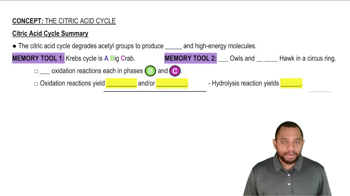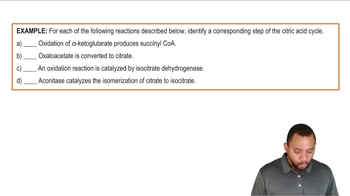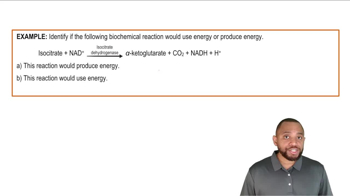Here are the essential concepts you must grasp in order to answer the question correctly.
Citric Acid Cycle
The citric acid cycle, also known as the Krebs cycle or TCA cycle, is a series of chemical reactions used by all aerobic organisms to generate energy. It occurs in the mitochondria and is a key component of cellular respiration, where acetyl-CoA is oxidized to produce energy-rich molecules.
Recommended video:
Citric Acid Cycle Summary Concept 12
Acetyl-CoA
Acetyl-CoA is a central metabolite in the citric acid cycle, formed from carbohydrates, fats, and proteins. It serves as the starting substrate for the cycle, combining with oxaloacetate to form citrate, which initiates the series of reactions that lead to energy production.
Recommended video:
Phase B - Succinyl CoA Formation Example 2
Products of the Cycle
One turn of the citric acid cycle produces several key products: three NADH, one FADH2, one GTP (or ATP), and two carbon dioxide molecules. These products are crucial for the electron transport chain, where NADH and FADH2 are used to generate additional ATP through oxidative phosphorylation.
Recommended video:
Energy Production In Biochemical Pathways Example 1
 Verified step by step guidance
Verified step by step guidance Verified video answer for a similar problem:
Verified video answer for a similar problem:



 1:32m
1:32m